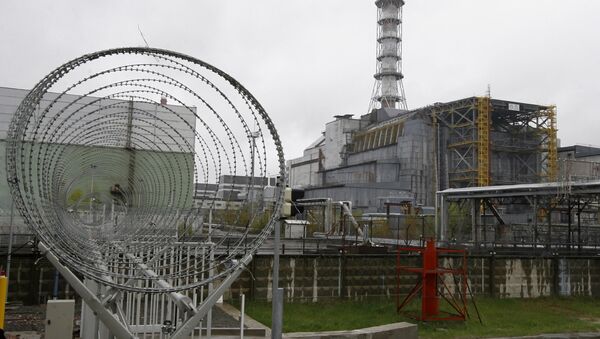The nature of the Chernobyl disaster, which propelled tons of radioactive material into the air and caused the evacuation of the entire city of Pripyat 31 years ago, might have been caused by a nuclear explosion, says Lars-Erik De Geer, a scientist from Swedish Defence Research Agency and the leader of a team researching the famous meltdown.
"Our new theory deepens the understanding of the severe effects that can be the result of some original design faults in such reactors," De Geer told Fox News. "Much has been corrected in remaining [Chernobyl-like] reactors, but a better understanding of what really happened in 1986 must of course be of great value for overseeing and possibly improving the design also in the future."
According to their report, published in Nuclear Technology magazine, the first of a series of explosions that happened on April 26, 1986, was actually a little nuclear explosion — very much like in a nuclear bomb, but much smaller.
"The first explosion consisted of thermal neutron mediated nuclear explosions in one or rather a few fuel channels, which caused a jet of debris that reached an altitude of some 2,500 to 3,000 m," the authors suggest. "The second explosion would then have been the steam explosion most experts believe was the first one."
This contradicts the longtime official theory, which holds that the first explosion that propelled the heavy lid off the reactor and through the roof of the building was just a steam pressure explosion.
While we usually imagine nuclear explosions to be huge, all-devastating, multiple-megaton bombs, the explosion that happened within the reactor was only equivalent to 75 tons of TNT, the scientists say.
The scientists base their theory on data collected by Soviet scientists four days after the incident. Two rare isotopes of xenon that do not exist in nature — xenon-133 and xenon-133m — were discovered in Leningrad (now St. Petersburg) and Cherepovets, cities located more than 500 miles from the disaster site.
These isotopes, scientists say, could have appeared as a result of a recent nuclear fission, i.e. a nuclear explosion. Interestingly, these isotopes were only found in northern Russia, never in Europe, which suggests the two explosions created two different layers of debris at different altitudes. The two layers were carried away by different airflows, as winds tend to be have quite different directions at different heights.
The scientists claim the meteorological data from the time of the accident supports their new theory. The Cherepovets isotopes should have been propelled up to 3.5 km high, which only a nuclear explosion can do, they say.
The first explosion itself happened because of bubbles of water steam, the scientists explain. While water in the reactor is supposed to slow down neutrons and control the nuclear reaction, gaseous steam does not slow down neutrons, and thus allowed the nuclear reaction to accelerate out of control.
The well-known laser-like blue glow reported by late Alexander Yuvchenko, as well as the reported smell of ionized air are also results of a plasma beam, researchers say.
The theory still needs to be confirmed, though. To do that, De Geer and his team will study records of xenon isotopes in European countries. If the discrepancy is still there, then their theory will be confirmed, they say.




